The Temple of Literature (Văn Miếu), located in Hanoi, Vietnam, is a significant cultural and historical landmark dedicated to Confucius. It holds the distinction of being Vietnam’s first national university, reflecting the country’s deep reverence for education and scholarship. Among the bustling streets of Hanoi’s Dong Da district, the Temple of Literature stands as a tranquil haven for introspection and an emblem of Vietnam’s cultural and academic pride. This ancient complex attracts visitors from across the globe who seek to immerse themselves in the history, architecture, and cultural legacy of Vietnam’s premier educational institution.
Watch the video summarizing the article “Temple of Literature, Hanoi: A Journey into Vietnam’s Intellectual Heritage”
History of the Temple
The history of the Temple of Literature is woven through the fabric of Vietnam’s educational and cultural development. Founded in 1070, it has witnessed countless transformations reflective of Vietnam’s dynamic historical landscape. From being an educational center to a ceremonial site, its historical significance remains unparalleled. The temple’s rich history offers a window into Vietnam’s past, from the days of its imperial dynasties to the contemporary era.
Founding and Establishment
The Temple of Literature was founded in 1070 by Emperor Lý Thánh Tông during the Later Lý Dynasty with the primary purpose of honoring Confucius, the ancient Chinese philosopher whose teachings greatly influenced Vietnamese education and culture. Six years later, in 1076, the Imperial Academy (Quốc Tử Giám) was built adjacent to the temple, becoming the country’s first university, primarily serving the education of the elite, including princes and nobles. This foundation marked a pivotal shift towards Confucian values, spotlighting the importance of education and moral integrity.
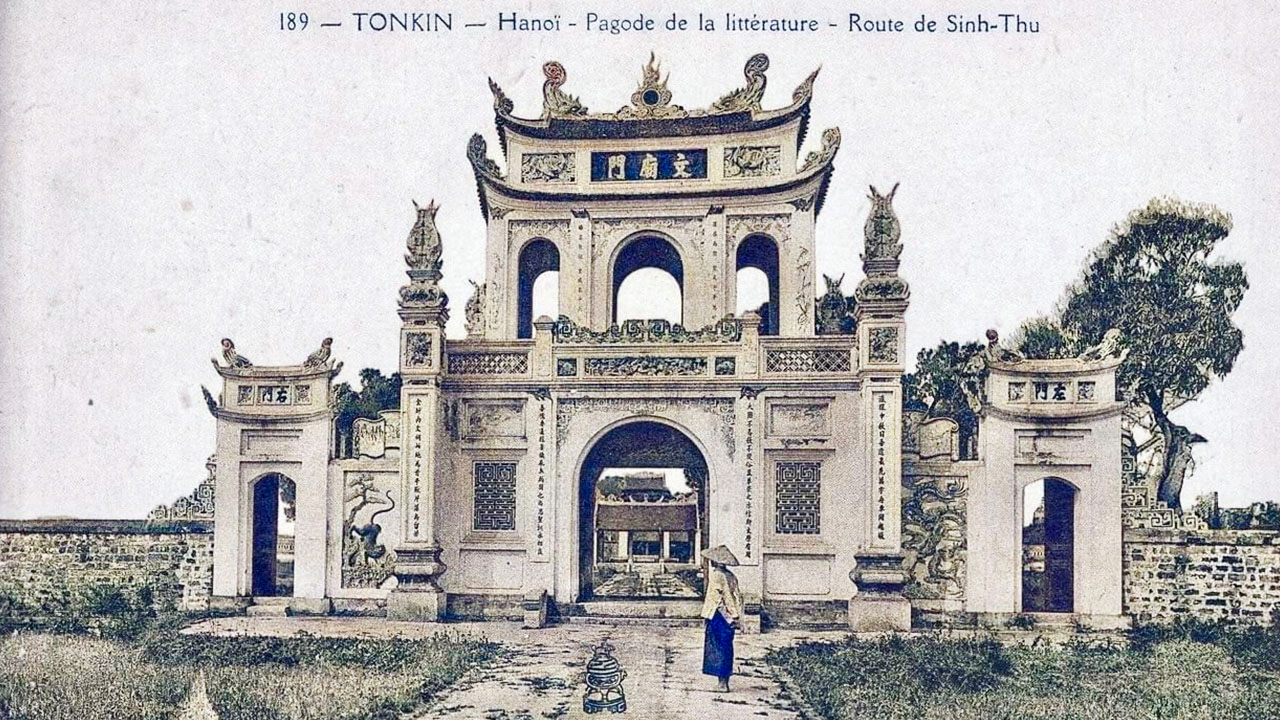
The construction of the Temple of Literature represents not just a physical building, but a symbolic shift towards Confucianism in Vietnam. This shift is akin to how the Renaissance in Europe symbolized a return to classical learning and values, fundamentally altering the educational landscape. Numerous renovations and expansions, especially post periods of war and natural disasters, have ensured that the temple remains an enduring monument to Vietnam’s educational heritage.
Through centuries, the temple has functioned as more than just an educational institution; it has hosted various significant examinations and nurtured many generations of scholars. The moral and philosophical underpinnings laid down by Confucian teachings permeated the curriculum, creating a solid intellectual foundation for Vietnamese society. The construction of the five distinct courtyards within the temple complex was executed meticulously, with each courtyard designed to reflect traditional Vietnamese aesthetics, mirroring the ideals of Confucianism in their pursuit of knowledge and harmonious living. This detailed and thoughtful design is a testament to Vietnam’s longstanding commitment to education and cultural values.
Development of the Imperial Academy
The Imperial Academy (Quốc Tử Giám), established in 1076, just six years after the founding of the Temple of Literature, was the first national university in Vietnam. Initially, it served to educate the children of the elite, including princes and nobles, with a curriculum steeped in Confucian teachings and Chinese literature. Over time, particularly from 1253 onwards, the academy opened its doors to exceptionally talented students from the general populace, reflecting an evolving inclusiveness in the Vietnamese education system.
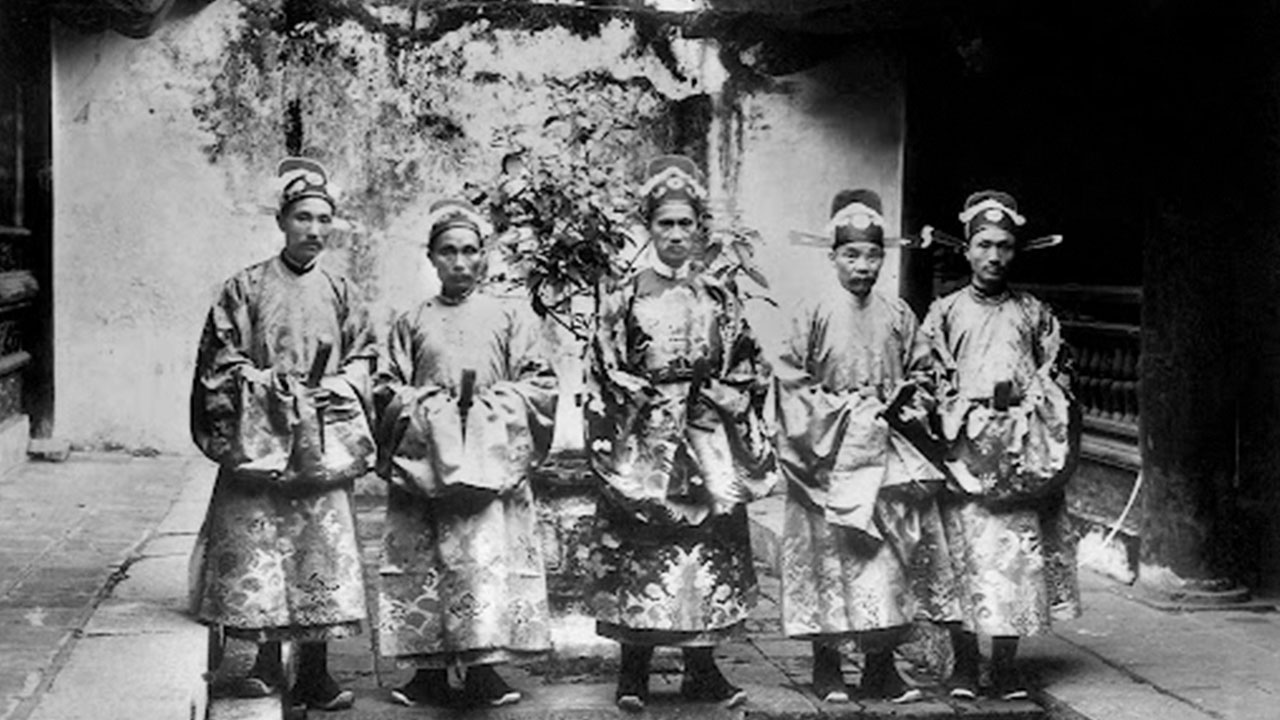
The structure of the Imperial Academy was rigorous, preparing individuals for high-ranking bureaucratic positions. Like the scholarly bureaucratic system of ancient China, Vietnam adopted a multi-tiered examination process, starting with regional exams and culminating in the royal exams, which were personally overseen by the monarch. This system resembles the modern-day competitive examination processes that govern entry into prestigious universities around the world.
After the capital was moved to Huế in the early 19th century by the Nguyễn dynasty, the importance of the Imperial Academy diminished, although its symbol as a cornerstone of Vietnamese education remained untouched. The temple continues to serve as a beacon of academic aspiration and cultural reverence. The Imperial Academy’s legacy lives on, evoking comparisons to how ancient universities, such as those in Oxford and Cambridge, continue to symbolize the pinnacles of education in the Western world.
Architectural Changes through Dynasties
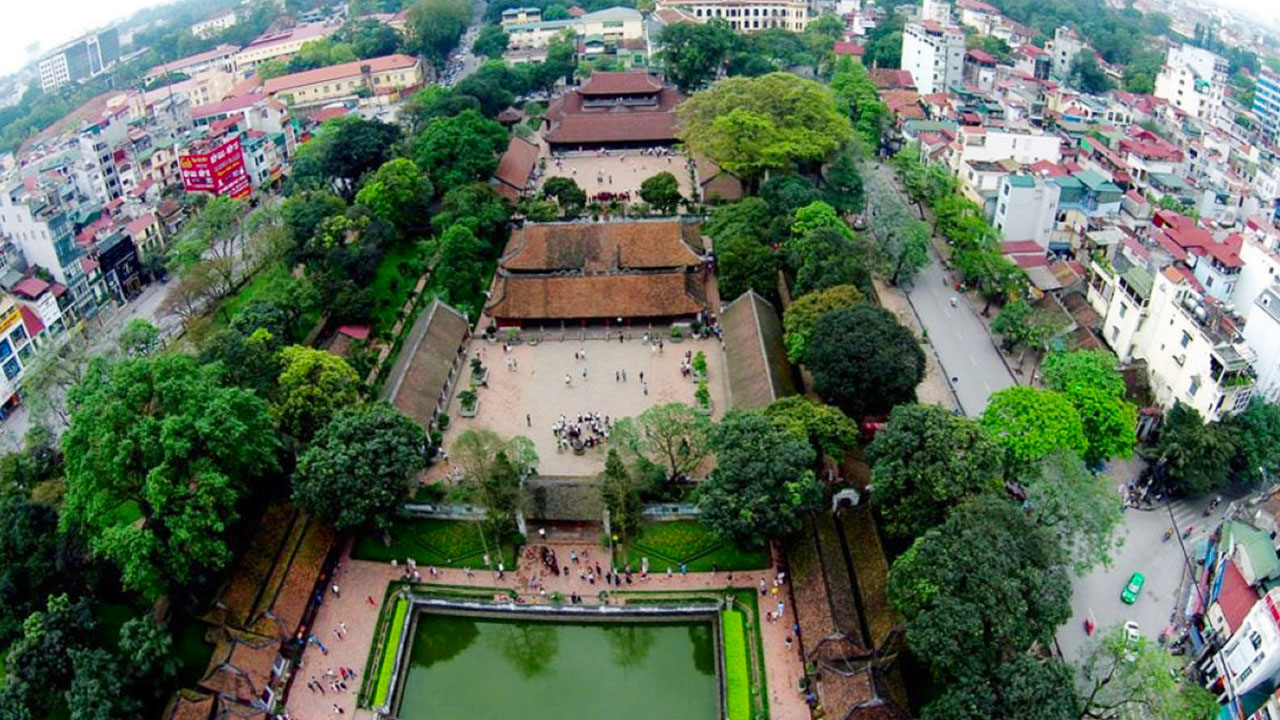
Over centuries, the architectural features of the Temple of Literature have evolved through multiple renovations and restorations reflective of various dynastic influences. Originally founded in the 11th century, the temple complex has seen significant changes, particularly during the Trần dynasty (1225–1400) and subsequent rulers.
- Restorations: Key intervals of restoration include significant refurbishments in 1920, 1954, and 2000. Each restoration aimed to preserve and sometimes enhance the ancient architectural styles that characterize the temple, similar to how historic buildings in other parts of the world are periodically restored to preserve their legacy.
- Architectural Style: The temple is an exemplification of traditional Vietnamese design, harmonizing with Confucian philosophy and aesthetics. The layered structure of the temple complex, divided into five courtyards, each dedicated to different purposes, integrates spiritual and scholarly endeavors seamlessly. The design elements, such as the stone turtles bearing inscriptions commemorating historical scholars, echo the deeper values of longevity and wisdom.
- Symbolic Structures: Symbolic architectural elements like the Khuê Văn Các pavilion, built in 1805, exemplify Vietnam’s blend of traditional aesthetics and scholarly values. This pavilion stands as a symbol of Hanoi and represents the ideals of scholarship and intellectual beauty. The pavilion’s design, with four whitewashed stone pillars supporting a red roof adorned with poetic inscriptions, mirrors the elegance and significance of literary and intellectual pursuit in Vietnam.
Significant Events Over Centuries
The Temple of Literature has been a center for numerous significant events throughout its nearly thousand-year history. Serving as a place for the royal examinations, it emphasized the value of academic achievement within Vietnamese society. These examinations were akin to the rigorous entry processes of the world’s leading universities today, underlining the importance of educational merit.
During its extensive history, the temple has witnessed multiple invasions and conflicts, including wars with the French. Notably, efforts were made to preserve its historical and architectural integrity during the 20th century, leading to significant restorations in the 1920s and 2000s. These restorations ensured the survival of the temple’s architectural majesty and its role as a cultural and educational hub.
Cultural Importance in Modern Vietnam
In contemporary times, the Temple of Literature continues to hold immense cultural significance. It remains a sought-after site for cultural events and festivals, with students frequently visiting to pray for academic success, especially during examinations. This ongoing tradition is similar to how students in other countries might visit places of historical significance seeking inspiration and blessings before significant educational milestones.
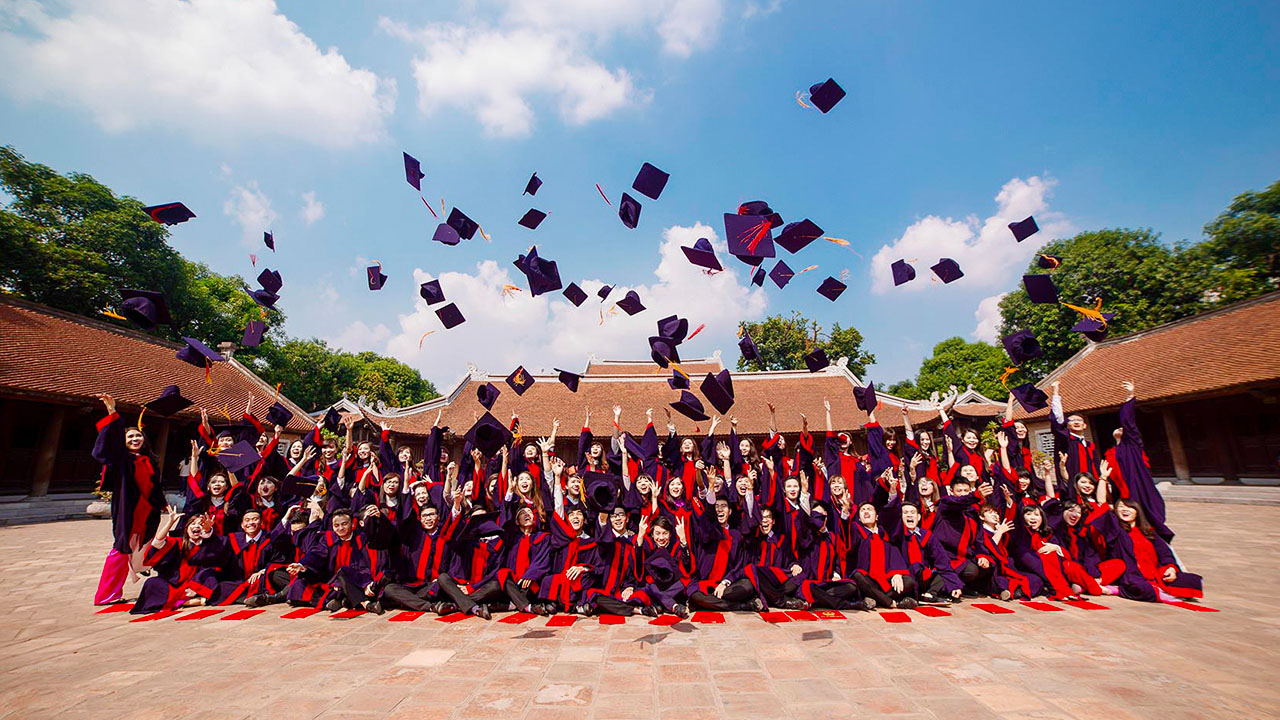
Cultural festivals and ceremonies during the Lunar New Year and other important Vietnamese celebrations uphold the temple’s status as a living monument to Vietnam’s educational traditions and cultural practices. The enduring respect for education and scholarship embedded in the temple’s history continues to resonate with Vietnamese society today.
Architectural Features
The architectural features of the Temple of Literature present a tangible connection to Vietnam’s history and cultural values. Each structure within the complex reflects the principles of Confucianism and the aesthetic traditions of ancient Vietnamese architecture.
Overview of the Complex Layout
The layout of the Temple of Literature is methodically designed to symbolize various aspects of Vietnamese culture and Confucian philosophy. Spanning over 54,000 square meters, it follows a symmetrical design reminiscent of the layout of Confucius Temple in Qufu, Shandong, China. The complex is enclosed by imposing brick walls, creating a regal and solemn atmosphere.
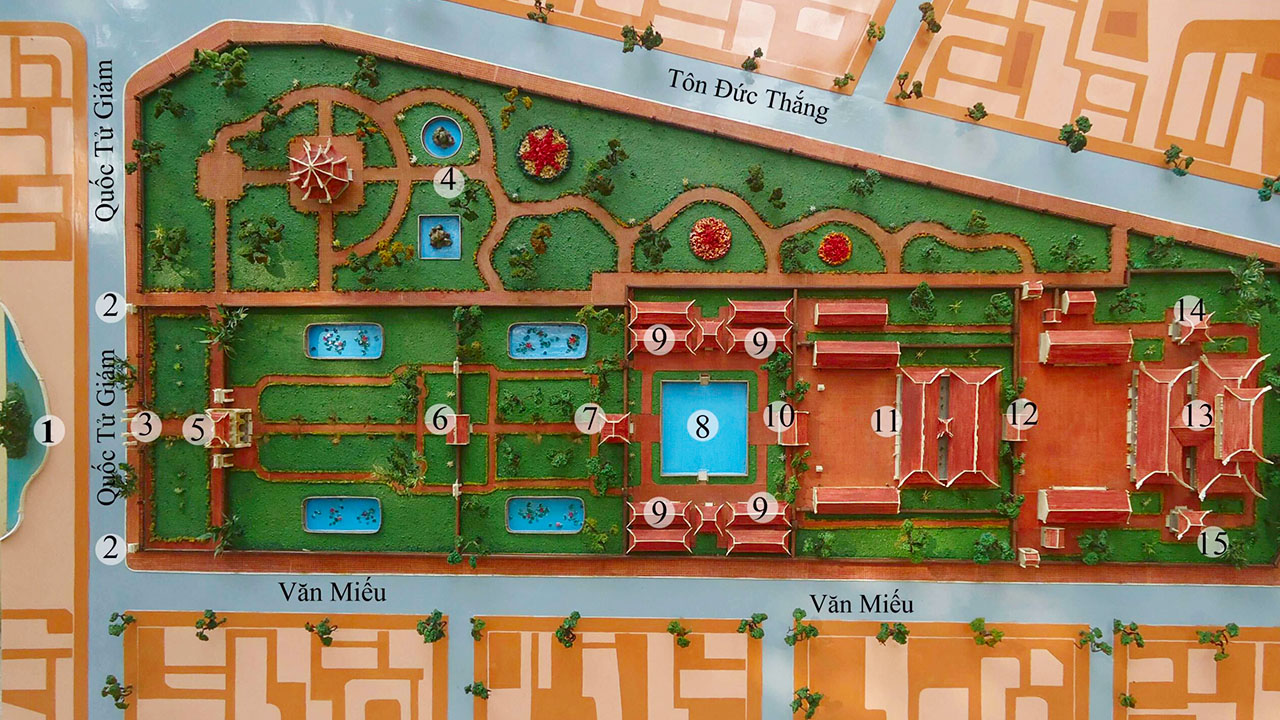
The main gate, known as the Văn Miếu Môn, features a decorative two-tiered gate with three entrances, where the central one is reserved for the monarch. The use of intricate carvings and traditional Vietnamese architectural elements sets a grand stage for what lies beyond. Continuing through the five main courtyards, each holds different symbolic significance, ranging from transition, academic achievements, ceremonial functions, to educational excellence.
The thoughtful and intricate design of each section within the complex ensures a seamless journey for visitors from the secular to the sacred, much like how reflective pathways in spiritual retreats across the world guide individuals towards enlightenment and introspection.
Main Gates and Entrances
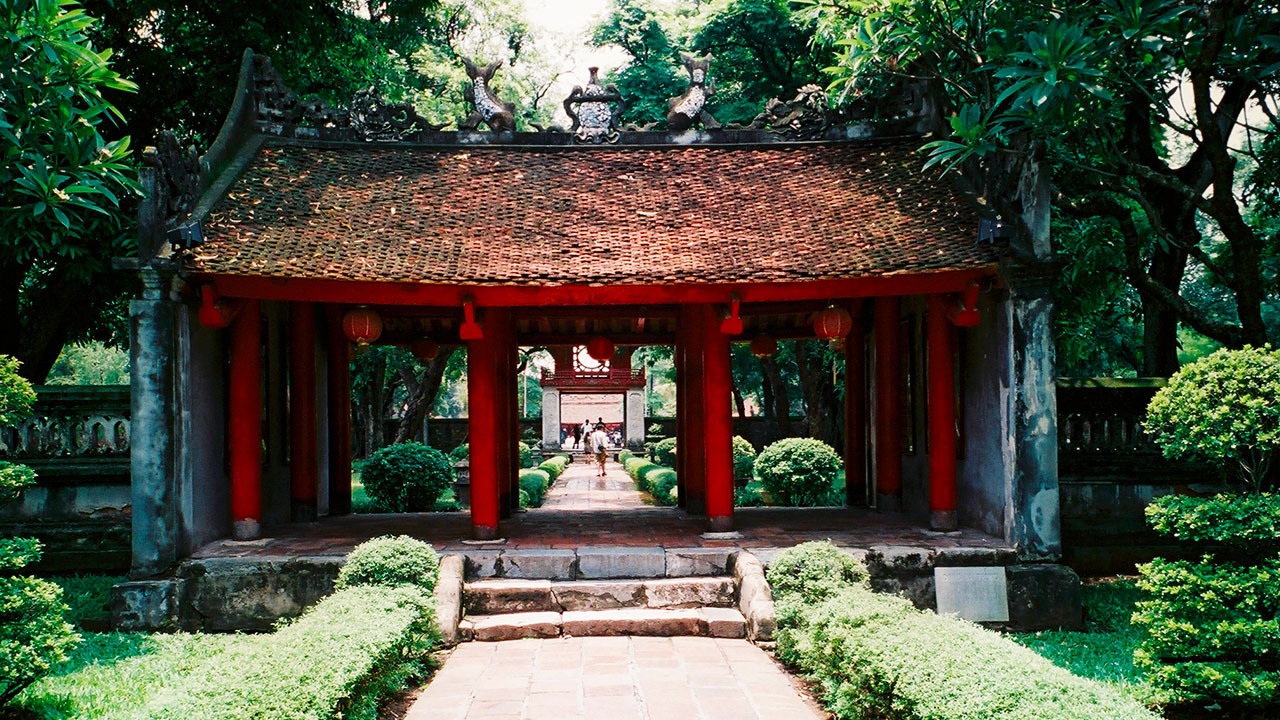
The main gates act as the primary transitions into the inner sanctums of the Temple of Literature. Each gate not only serves a functional purpose but also embodies intricate architecturally significant designs and cultural symbolism.
- Great Middle Gate (Đại Trung Môn): This main gate consists of three compartments, symbolizing the revered transition from secular life to sacred scholarly pursuits. It also underscores the importance of tradition in Vietnamese culture, akin to grand entrances found in other historical temples and universities worldwide.
- Van Mieu Gate (Cổng Văn Miếu): This three-entrance gate located at the front of the complex features historic inscriptions in ancient Chinese characters and requires visitors to dismount from horses upon entering, a gesture mirroring respect and reverence for the site’s significance.
- Gates to the Courtyards: Smaller gates leading into each courtyard serve specific purposes, often categorizing the areas of academic, ceremonial, or educational significance, much like how medieval European universities are divided into distinct colleges each with unique gateways and courtyards.
Notable Pavilions and Halls
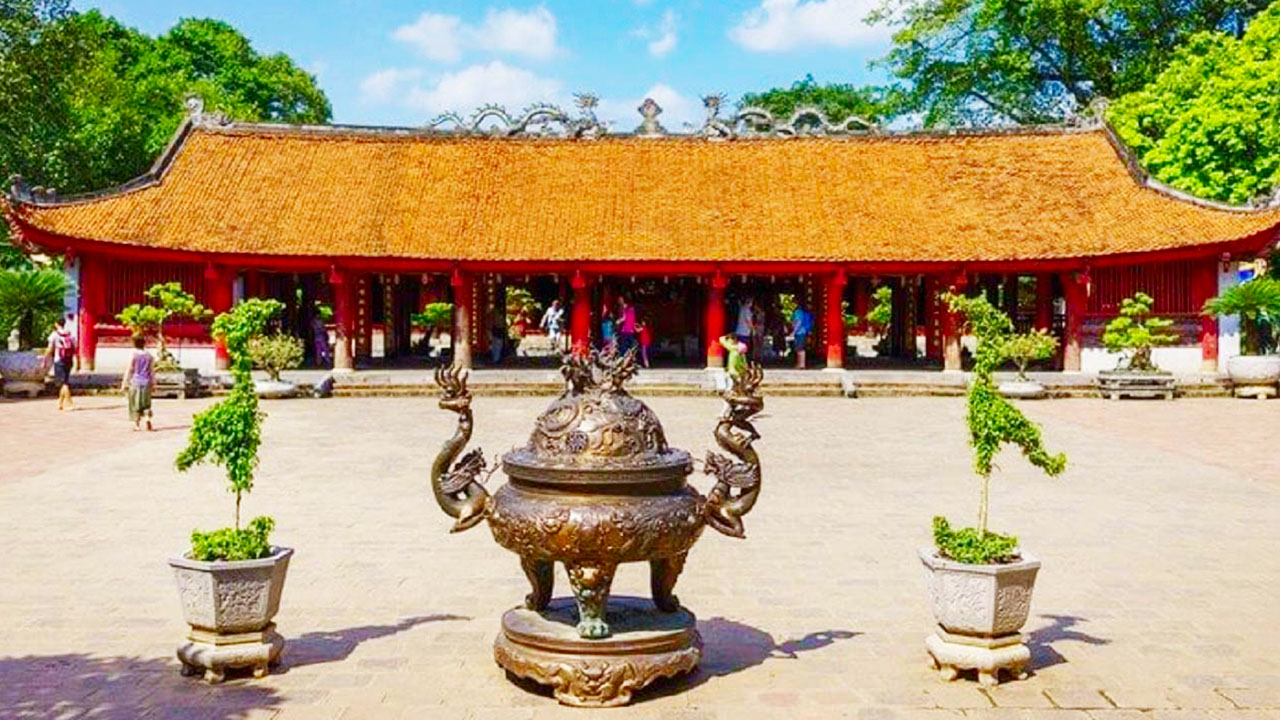
The notable pavilions and halls within the Temple of Literature include architectural marvels that hold significant cultural and scholarly importance.
- Khuê Văn Pavilion (Khuê Văn Các): Built in 1805, this pavilion stands as a symbol of Hanoi. Its construction on four whitewashed stone pillars and unique red roof with circular windows embodies traditional Vietnamese aesthetics and scholarly aspirations. It is a central attraction within the complex and encapsulates the balance between architectural beauty and intellectual pursuit.
- House of Ceremonies (Đại Bái Đường): Located in the fourth courtyard, this house is used for different rituals and ceremonies, including those honoring Confucius and his disciples, reflecting the classical Vietnamese architectural styles with its expansive structure and decorative elements.
- Thiên Quang Well (Well of Heavenly Clarity): Positioned in the third courtyard, this square well surrounded by stone turtles bearing stelae with inscriptions of scholar names represents the harmony and clarity in the pursuit of knowledge, symbolizing the deeper philosophical principles embedded in the site.
- Stelae of Doctors (Bia Tiến Sĩ): Arranged around the Thiên Quang Well, these stone stelae bear the names and achievements of historical scholars who excelled in royal examinations, commemorating intellectual achievement similar to honorary plaques in prestigious institutions worldwide.
The Khue Van Pavilion
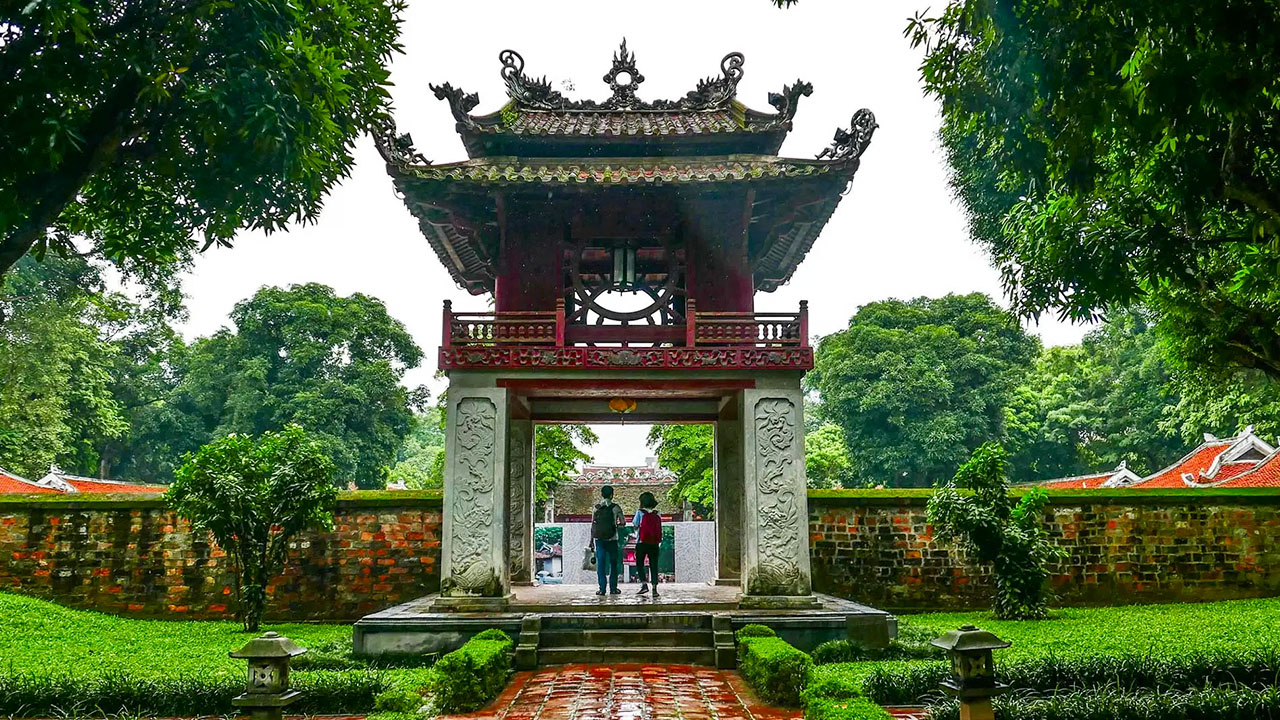
The Khue Van Pavilion stands as one of the most iconic features of the Temple of Literature. This pavilion, built in 1805, is an architectural marvel and a renowned symbol of Hanoi.
- Construction and Structure: Its two-story design features four whitewashed stone pillars on the ground floor, supporting an upper wooden structure. The unique red tile roof with two levels and eight-roof construction symbolizes harmony and intellectual enlightenment.
- Cultural Significance: The Khue Van Pavilion was traditionally a gathering place for scholars and officials to engage in intellectual discussions. Today, it stands as a symbol of Hanoi and the larger societal respect for literature, learning, and scholarly achievement.
Visiting Information
Visiting the Temple of Literature in Hanoi provides a rich cultural experience, offering insights into Vietnam’s deep-rooted traditions and historical significance.
Opening Hours and Ticket Prices
The Temple of Literature operates under varied hours depending on the season:
- Hot Weather Season (April 15 to October 15): Open from 7:30 AM to 5:30 PM.
- Cold Weather Season (October 16 to April 14): Open from 8:00 AM to 5:00 PM.
- Special Night Program: Open from 7:00 PM to 10:00 PM for a special nighttime experience featuring unique lighting and 3D mapping.
Ticket Prices:
- Adults: 30,000 VND (approximately 1.3 USD)
- Students: 15,000 VND (approximately 0.7 USD) with a valid ID
- Children under 15: Free
These details ensure that visitors are well-prepared for their visit, reflecting the temple’s accessibility and affordability while preserving its cultural and historical essence.
Transportation Options to the Temple
The Temple of Literature is conveniently located in Dong Da District, making it accessible via various transportation options:
- Bus: Several bus routes, including lines 02, 23, 38, 25, and 41A, stop near the temple, ideal for those using public transportation.
- Taxi: A taxi ride from Hoan Kiem Lake takes approximately 10 minutes, offering comfort and convenience.
- Walking: For a leisurely experience, walking from Hoan Kiem Lake to the temple takes about an hour, allowing visitors to enjoy Hanoi’s street life.
- Cyclo: Taking a cyclo provides a traditional and engaging way to reach the temple, enhancing the overall cultural experience.
Visitors are advised to follow a respectful dress code and etiquette: wearing clothing that covers shoulders and knees, maintaining a low noise level in worship areas, and being cautious not to touch or damage artifacts.
Tips for First-Time Visitors
For those visiting the Temple of Literature for the first time, here are some key tips:
- Plan your Visit: Allocate at least an hour to explore the temple in the morning to avoid the heat.
- Grab a Guide: Consider joining a guided tour for comprehensive insights into the temple’s history and architecture.
- Nearby Attractions: Explore nearby sites like the Hanoi Flag Tower, Thang Long Imperial Citadel, Ho Chi Minh Mausoleum, Hoa Lo Prison Relic, and the scenic temples of One Pillar Pagoda and Quan Su Pagoda.
These tips help first-time visitors maximize their experience, connecting them deeply with the cultural and intellectual heritage of Vietnam.
Cultural Activities and Events
The Temple of Literature is not just a historical site but a vibrant cultural hub in modern Vietnam, hosting a variety of cultural activities and events.
Traditional Festivals Held at the Temple
During the Lunar New Year (Tết), the temple comes alive with cultural activities like calligraphy, prayers for luck and prosperity, and other festive ceremonies.
Poetry Festivals celebrated at the Temple of Literature attract poets and literary enthusiasts, reflecting the temple’s continued influence on Vietnamese culture.
Calligraphy Activities for Visitors
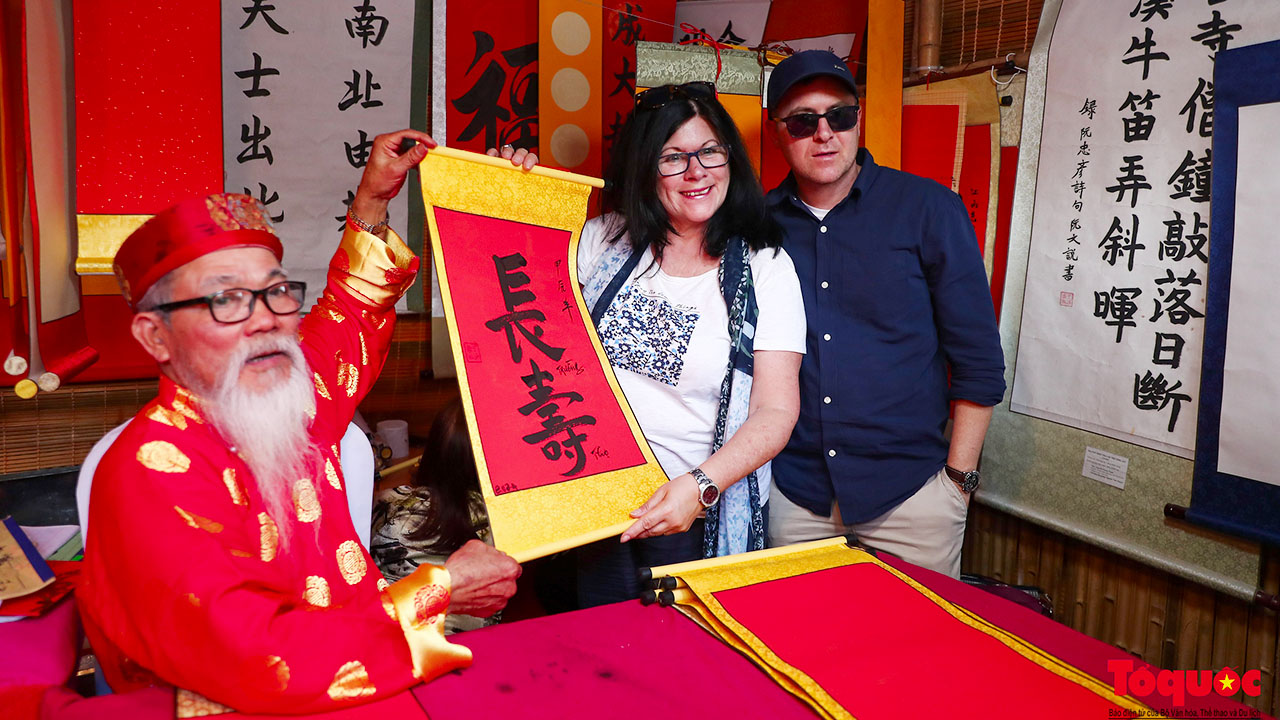
Calligraphy sessions are offered, giving visitors a chance to learn and appreciate this traditional form of art, reflecting the educational and artistic spirit of Confucian teachings.
Special Night Tours and Experience Programs
Starting on November 1, 2023, night tours with the theme “Essence of Confucianism” blend modern technology with traditional culture, featuring 3D mapping, light displays, and interactive exhibits, providing a unique nighttime experience. These tours are available on Wednesdays, Fridays, Saturdays, and Sundays from 7:00 PM to 10:00 PM.
Cultural Significance of Exam Ceremonies
The Temple of Literature hosts traditional ceremonies honoring scholars, particularly during significant cultural festivals, reflecting the deep respect for education and scholarly achievement in Vietnamese society.
Visiting Tips
For a fulfilling visit to the Temple of Literature, consider the following:
Best Times to Visit
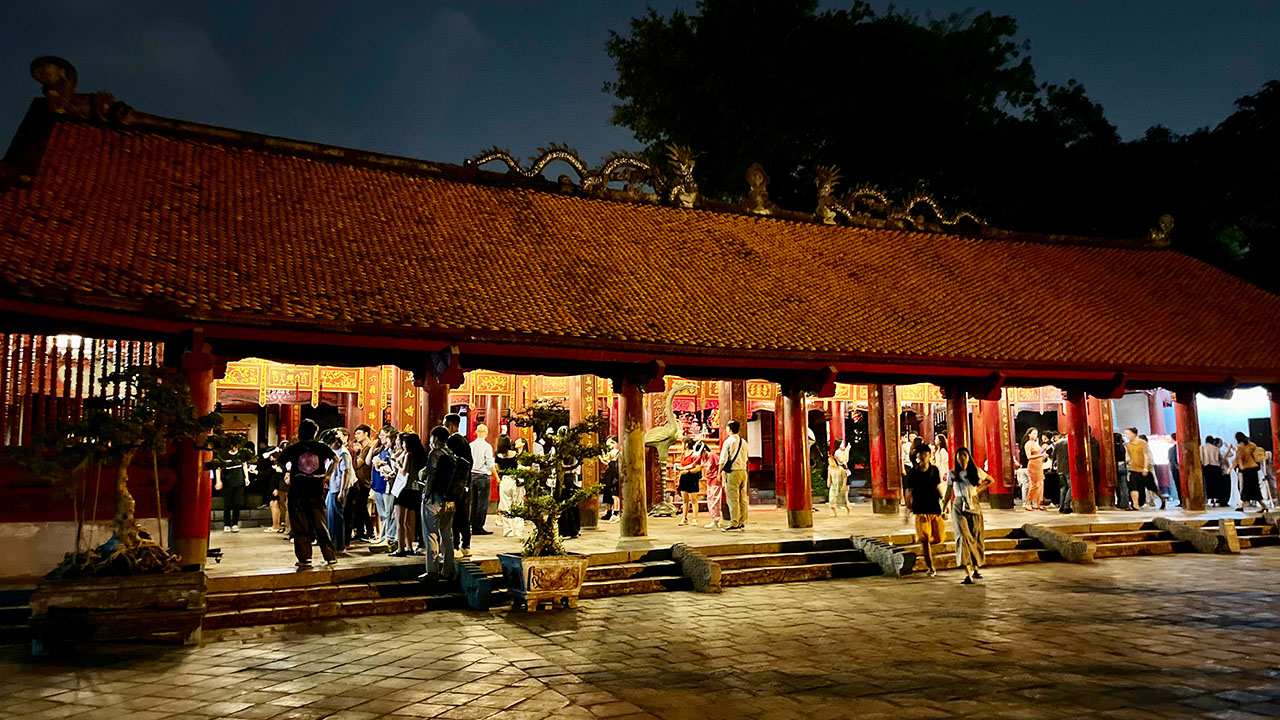
The ideal time is between October and April during Hanoi’s dry season when the weather is pleasant.
Special Night Tours: Avail the nighttime experience for a unique perspective of the temple, running from 7 PM to 10 PM on specific days.
Photography Guidelines
Maintain respect for the sacred environment, dress modestly, and avoid damaging any structures while taking photos.
Recommended Duration of Visit
A visit typically lasts 1 to 2 hours, though more time can be spent delving into the temple’s history and architecture if interested.
Safety and Health Precautions
Wear comfortable footwear, stay hydrated, and respect local etiquette by dressing appropriately and maintaining a low noise level.
Accessibility Information
While some pathways are accessible, certain areas may present challenges. It’s advisable to bring a companion if needed and inquire about specific accommodations at the visitor center.
Significance in Vietnamese Society
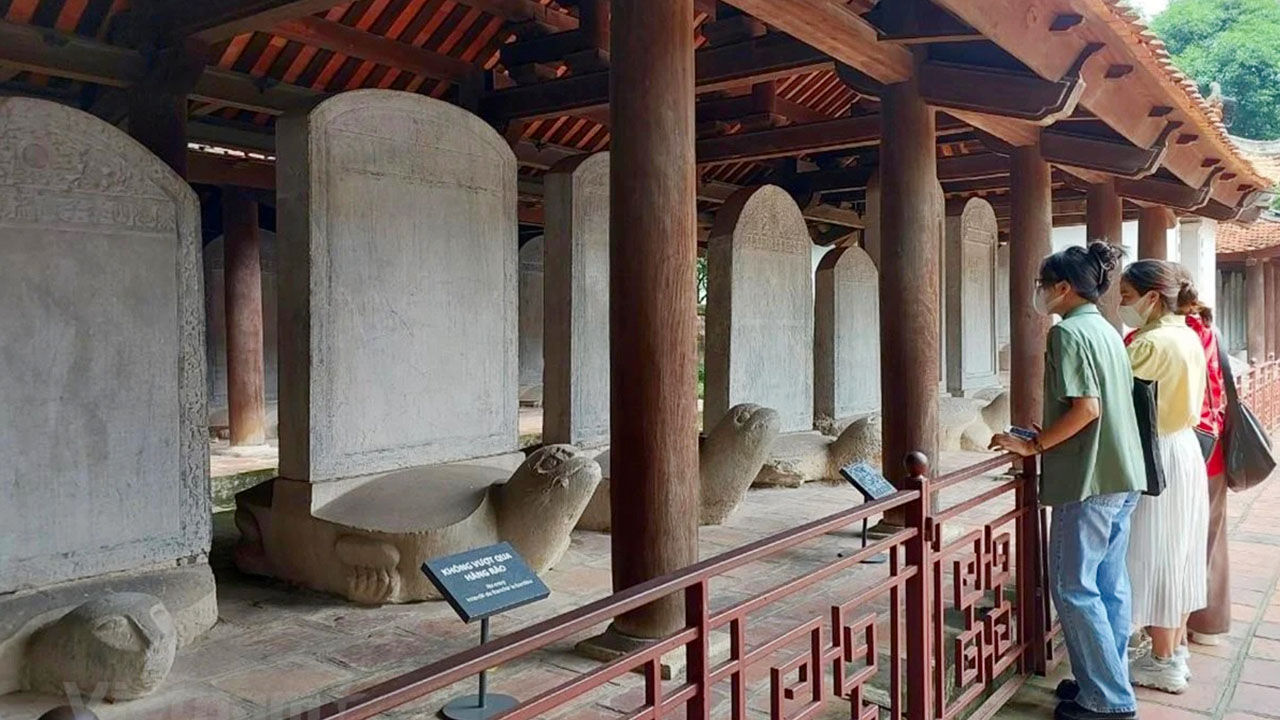
The Temple of Literature holds immense significance in Vietnamese society, reflecting the country’s dedication to education, cultural heritage, and Confucian values.
Role in Education and Learning
The temple was home to Vietnam’s first national university, playing a pivotal role in educating the country’s elite and fostering an intellectual class grounded in Confucianism. This legacy is akin to the influence of early European universities on their respective cultures.
Influence on Arts and Literature
The temple continues to inspire poets, writers, and artists, emphasizing themes of morality, virtue, and education in Vietnamese literature. Its role in hosting cultural and literary events further solidifies its impact on Vietnam’s artistic and literary landscape.
Symbol of Cultural Heritage
The temple is a landmark preserving Confucian values, as seen in its architecture that symbolizes harmony and balance. It stands as a national cultural icon, much like how other historical monuments around the world encapsulate their nation’s heritage.
Connection to Confucian Philosophy
The Temple of Literature exemplifies the influence of Confucian philosophy in Vietnamese society, underscoring moral integrity, education, and social harmony. Its educational programs seek to perpetuate these values for future generations.
Preservation Efforts and Future Plans
Continued preservation efforts, including periodic restorations and educational outreach, ensure the Temple of Literature remains a vibrant educational and cultural hub. These initiatives are crucial for maintaining the temple’s historical integrity while introducing new generations to Vietnam’s rich cultural and educational heritage.
Temple of Literature Surroundings
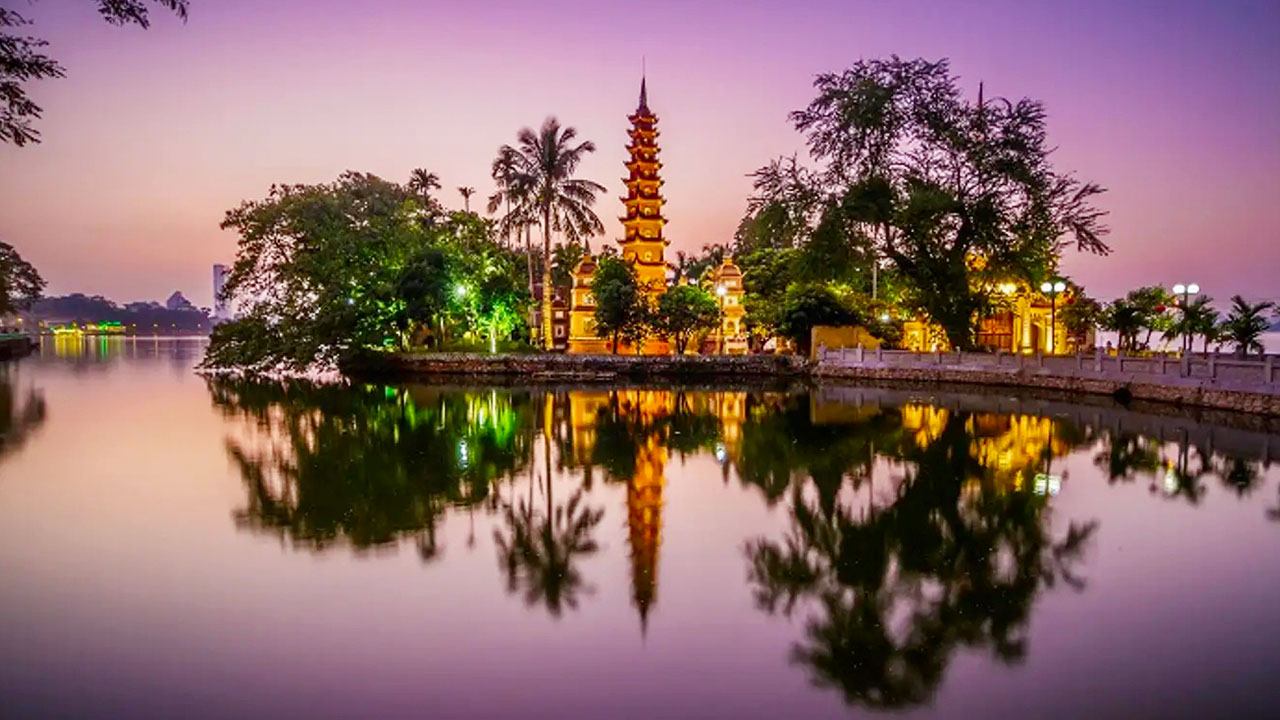
Quang Trung Temple: Located near the Temple of Literature, the Quang Trung Temple is dedicated to Emperor Quang Trung, a legendary military leader. Visitors can explore this temple to gain insights into Vietnam’s military history and pay tribute to a revered national hero.
Ho Chi Minh Mausoleum: A short distance from the Temple of Literature, the Ho Chi Minh Mausoleum is the final resting place of Ho Chi Minh, the beloved leader of Vietnam. Visitors can pay their respects to this iconic figure and learn about his role in shaping Vietnam’s modern history.
Ho Chi Minh Museum contains numerous documents and artifacts regarding President Ho Chi Minh as well as his cultural and revolutionary legacy. A visit to the museum illustrates the tremendous sacrifices he made for the Vietnamese people. Enhance your Hanoi experience with a pilgrimage to the Ho Chi Minh Museum.
Hanoi Old Quarter, famed for its abundance of captivating attractions, tantalizing culinary offerings, lively nightlife, and distinct handicrafts, is a downtown area embodying the city’s historical ups and downs. This makes it a compelling spot for travelers seeking to delve into Hanoi’s cultural heritage and engage in leisurely strolls to discover its iconic landmarks.
Hanoi Opera House: Another nearby attraction is the Hanoi Opera House, a stunning architectural masterpiece inspired by the Paris Opera House. Visitors can admire its elaborate facade, attend performances, and experience the vibrant cultural scene of Hanoi.
In conclusion, the Temple of Literature in Hanoi stands as a timeless symbol of Vietnam’s intellectual legacy, cultural pride, and reverence for education and scholarly achievement. Whether through its historical significance, architectural beauty, or cultural activities, it offers a profound connection to the values that have shaped and continue to shape Vietnamese society.



